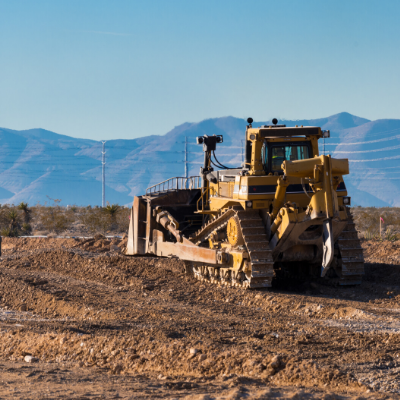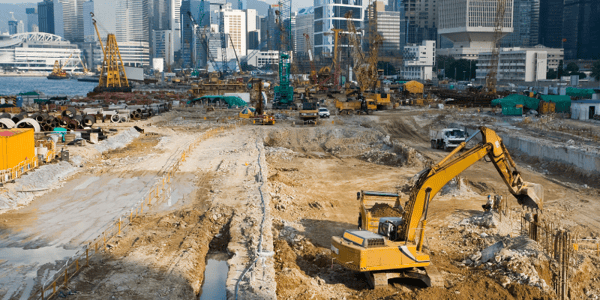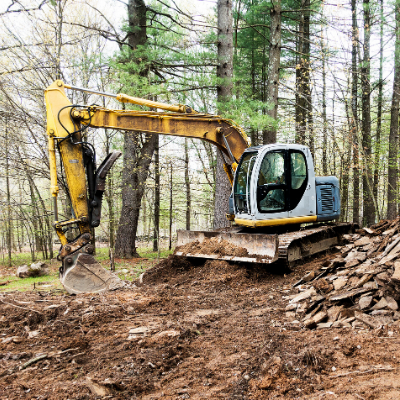What Are The Different Types of Excavation?
In any construction project, earth excavation and grading can be one of the most captivating parts.
The heavy equipment used by a skilled operator is a joy to behold.
Priming of the ground is essential before any project can begin, and excavation is the first step to any construction job.
Excavation clears space for your project, no matter what you are constructing.
Excavation removes the soil, rock, or other materials from your job-site with specialized tools, equipment, or explosives.
These processes can include earthwork, trenching, wall shafts, tunneling, and underground.
Every job-site should be carefully examined before any excavation process can begin to ensure the preservation of the natural habitat and artifacts surrounding it throughout the process.
Excavation for projects could range from underground water and sewer line repair or replacement, service and installation of wells or septic tanks, or backhoe service for demolition, maintenance, or landscape projects.
In the article below, we'll look at the different types of excavations used in the construction industry.
- Topsoil Excavation
- Rock Excavation
- Muck Excavation
- Earth Excavation
- Underground Excavation
- Stripping
- Drainage
- Dredge
- Footings
- Borrow Excavation
- Unclassified Excavation
- Contact Stevens Today
Topsoil Excavation
Topsoil excavation is the removal of the surface layer of soil.
The surface-level soil has a higher moisture content than the lower levels supporting the growth of vegetation.
When the surface level soil is removed, the layer underneath loses moisture and is easier to work with.
Topsoil is typically kept on-site so that it can be used for landscaping later.
Rock excavation
Rocky surfaces can hinder construction projects, often bringing them to a complete halt.
That means excavation is required.
Rock excavation is challenging because it requires specialized equipment. Drilling is often necessary for harsh surfaces.
Blasting is another technique used in rock excavation.
Muck excavation
When soil mixes with water, creating muck, it often causes problems on construction sites.
Muck should be removed because its instability is unsuitable for any building project.
Sometimes the muck can be spread out so that it can dry, or the soil characteristics can be altered.
Adding other materials to the muck is another strategy used to decrease its moisture content.
Earth excavation
Earth excavation is when the soil underneath the topsoil is removed.
When this soil is removed, it's often used to build embankments or drainage ditches.
It can also be used to make foundations. Scrapers are used to move the earth.
Owning the right equipment makes this is a relatively straightforward process.
Underground excavation
Specialized tools and equipment are needed to execute underground excavation.
All excavation requires adherence to safety protocols, but underground excavation requires additional precautions.
Shafts or tunnels are excavated during the construction of roadways, subways, canals, and sewage.

Stripping
Stripping clears significant areas of materials before a construction project can begin.
Stripping removes a range of materials, including topsoil, sand, and gravel.
Wide and shallow sections of materials are typically cleared during this process, and grading may be necessary.
Drainage
Drainage removes water from the land.
Ditches or trenches may be created during the construction process, and materials are also excavated when storm drains are built.
Pipes are installed underneath roadways for this purpose.
Infrastructure and agriculture are protected from damage by proper drainage excavation.
Material cleared during this process needs to be removed as it's not workable.
Dredge
It's not uncommon for sediment deposits to collect in waterways resulting in blockages.
When this happens, dredging is used to clear waterways so that boats can pass through them.
Dredging occurs underwater.
Footings
Footing requires the most accuracy out of all the different types of excavation.
Footings are the foundation structures used to ensure buildings are stable.
Sites need to be graded before excavation takes place.
Specialized equipment and a lot of hard work are needed to complete the process.
Borrow excavation
Borrow excavation occurs when materials are obtained from outside the building site.
These materials are used for embankments and fills. Borrow excavation typically occurs when it's been established that the required equipment cannot be obtained from the building site itself.

Unclassified excavation
When it's difficult determining the type of materials that are being removed, it's considered an unclassified excavation.
A blend of various materials can also be referred to as an unclassified excavation.
Contact Stevens Today
Now that you know more about the different types of excavation, you can determine which method is best suited for your construction site.
If you would like to learn more about the construction industry, you can visit our blog at https://www.stevensec.com/blog or contact us by clicking the link below to speak with one of our experts.



